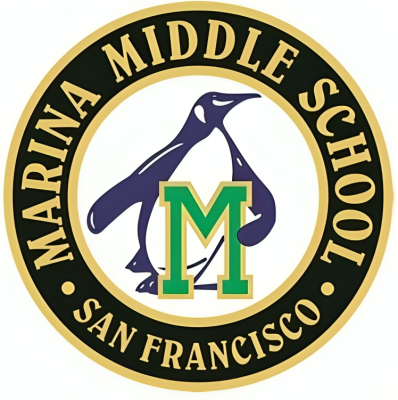
Science
A little humor goes a long way. Welcome to middle school science.
-->Scroll through these images to learn more about Marina Middle School academics
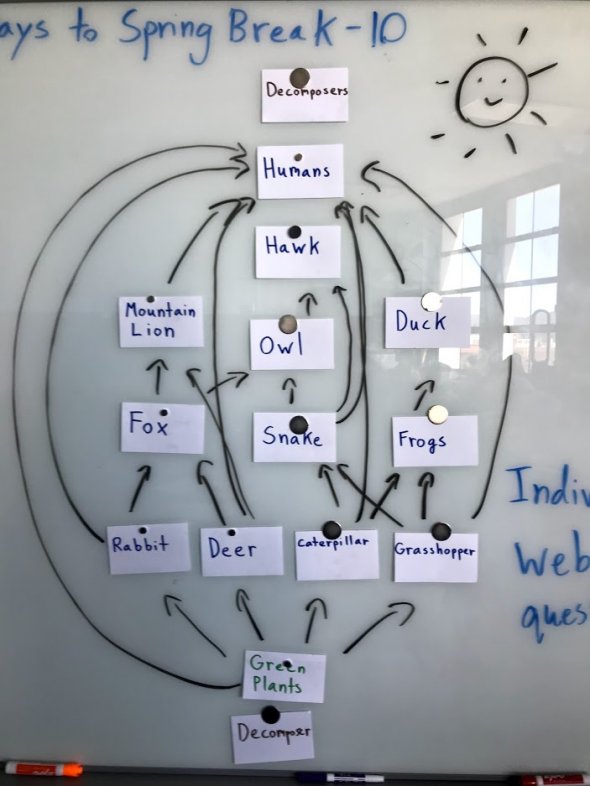
Science
7th Grade Science exploring ecosystems, organism interactions, location, mutualism, decomposers, primary consumers, and top predators.
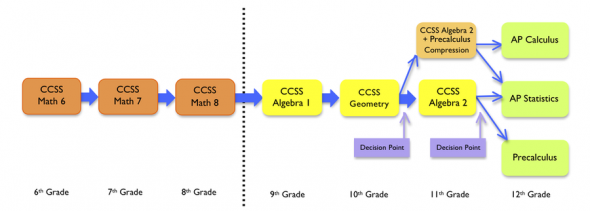
Math
In middle school all students will take math classes that include algebra in every grade level, with increased depth as the grades progress. The courses are called CCSS Math 6, 7, and 8. This new course sequence ensures a solid foundation that prepares students for college mathematics.
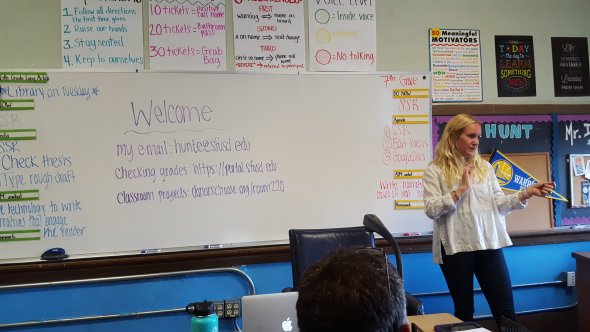
Language Arts
Using prompts from inside of class, outside, and from the text.
- What does it mean to "see the best in someone." Who sees the best in you?
- Write about a time you learned an important lesson. If it changed you, explain.
- Consider the ending of "Thank you, M'am" by Langston Hughes, write a continuation of the story from Roger's point of view.
Social Studies
From Ms Sparks 7th Grade Class: "The Roman Empire has fallen and western Europe has been thrown into chaos. To survive attacks by the barbarian tribe, the Sparkomaxians, you must work together with your group members to build a sustainable, defendable castle! You have FIVE days to build a castle, using only found materials (you cannot buy anything). The castle cannot be bigger than the desks at your group."
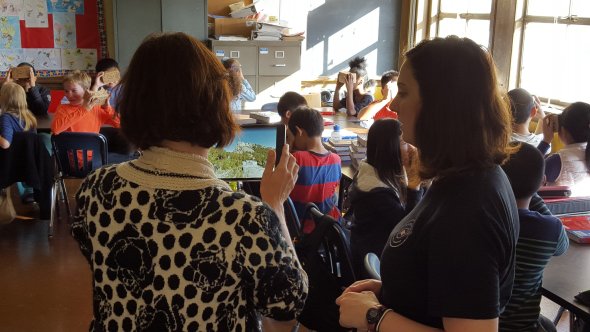
Technology in the classroom
Google came to Marina to introduce the virtual reality classroom product. Students were able to see historic sites across the globe and learn about unique sites.
Marina has three complete computer labs, eight rotating Chromebook carts, five rotating iPad carts, two MacBook carts for use by classrooms to support learning.
Science Link to this section
Marina follows the Next Generation Science Standards (NGSS), what does this look like?
6th Grade:
In sixth grade, the focus of science with be on understanding systems and system models (a Crosscutting Concept) through the study of Earth’s systems and the systems of living organisms. Students will also explore how humans impact various systems.
- In the fall semester, students will focus on energy and how it is transferred and converted between the atmosphere and the hydrosphere.
- In the spring semester, the focus shifts from looking at the human connection and impact on Earth’s systems to the systems within living organisms.
7th Grade:
Energy flow and matter cycling is a strong theme in seventh grade. By making connections between the natural process of energy flow and matter cycling, students will be better prepared to make connections about how humans impact these processes in ecosystems.
- In the fall semester of seventh grade, students will focus on how the Earth has physically changed over time due to the cycling of matter and flow of energy in various systems on Earth.
- In the spring semester, This unit will inform Unit 3: Ecosystems where students will focus on how the living and nonliving aspects of the environment affect organisms and their ecosystems.
8th Grade:
- Unit 1: Applications of Physics and Engineering, students will have an opportunity to be more metacognitive around engineering principles in the context of middle school physics.
- Unit 2: Understanding the Universe, students will revisit the larger context of the Earth in space and then focus on how life on Earth has changed over time.
- Unit 3: Earth’s Impact on Evolution, investigates how physical forces impact geologic changes, that have in turn influenced life on Earth.
- Unit 4: Earth’s Impact on Organisms, students will focus on natural selection and genetics to provide explanations for the changes of life on Earth over time and how the Earth has come to its current form.
Social Studies Link to this section
"In SFUSD all English language arts and social studies classrooms provide high quality instruction for all our students in alignment with our SFUSD ELA PK-12 Core Curriculum with embedded Common Core State Standards for Literacy. In addition, we believe that all our students must receive rich literacy experiences every year in every setting with every teacher, not merely in some years in some settings with some teachers.” –Humanities Team
Language Arts Link to this section
The Common Core State Standards for English Language Arts and Literacy build on the best of existing standards and reflect the skills and knowledge students will need to succeed in college, career, and life. Understanding how the standards differ from previous standards—and the necessary shifts they call for—is essential to implementing the standards well. There are three key areas of difference (source):
1. Regular practice with complex texts and their academic language
Rather than focusing solely on the skills of reading and writing, the ELA/literacy standards highlight the growing complexity of the texts students must read to be ready for the demands of college, career, and life.
2. Reading, writing, and speaking grounded in evidence from texts, both literary and informational
The Common Core emphasizes using evidence from texts to present careful analyses, well-defended claims, and clear information. Rather than asking students questions they can answer solely from their prior knowledge and experience, the standards call for students to answer questions that depend on their having read the texts with care.
3. Building knowledge through content-rich nonfiction
Students must be immersed in information about the world around them if they are to develop the strong general knowledge and vocabulary they need to become successful readers and be prepared for college, career, and life. Informational texts play an important part in building students’ content knowledge.
Math Link to this section
Beginning in the 2014-2015 school year, SFUSD and districts across the nation started using a new set of standards called the Common Core State Standards.
The Common Core State Standards in Math (CCSS-M) require change in the course sequence for mathematics in grades 6-12. For more detailed information please visit the SFUSD Mathematics Department Website.
What does that mean for middle schools across the district?
In middle school all students will take math classes that include algebra in every grade level, with increased depth as the grades progress. The courses are called CCSS Math 6, 7, and 8. This new course sequence ensures a solid foundation that prepares students for college mathematics. The content in the old Algebra 1 course under the previous California standards is now divided between the CCSS Math 8 course and the CCSS Algebra 1 course.
All 8th graders will take Math 8, and the following year these students will take CCSS Algebra 1 in 9th grade. Both CCSS Math 8 and CCSS Algebra 1 are more rigorous than the previous Algebra 1 course. These courses also include content previously taught in more advanced high school courses, as well as content not previously taught in middle and high school math, such as statistics.
This page was last updated on September 3, 2021

